IDENTIFICATION PARADE
Royal Mail
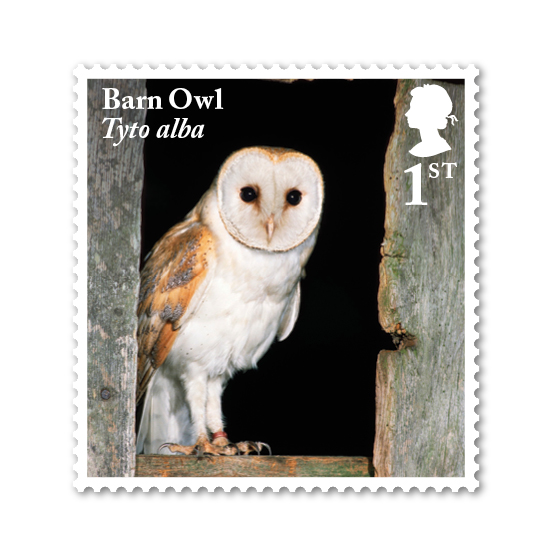
While the purchase of a stamp will of course fund the transportation of an envelope or package to its destination, a Royal Mail commemorative stamp also acts as an ambassador for Britain, and reaches out to the curious, the enthusiast and the collector alike. For ornithologists and philatelists, the birds of Britain are a much-loved theme — and a wonderful way to spark an amateur interest in studying birds, or even prompt the start of a thematic stamp collection.
Budgetary and deadline constraints prevented the keen twitchers here at Atelier from scouring the countryside, patiently pursuing and photographing Britain's most common owls. Instead, we set out to track down the very best images of these magnificent birds using the internet, in the hide set up in our London studio.
With its heart-shaped face, the Barn Owl is Britain's most recognisable predator and an obvious candidate to start the set. A mostly nocturnal hunter, this fine specimen is beautifully framed here by the hewn timbers of an old barn.
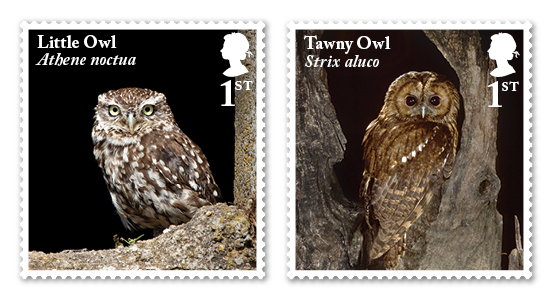
This Little Owl's camouflaged plumage matches the tree bark. It was a design challenge to scale a 'little' owl to fit the proportions of the stamp, while at the same time ensure that it appeared smaller than the other owls in the set.
Although rarely seen, the Tawny Owl is Britain's most common owl. It stays in the same territory throughout the year and will often have favourite watchpoints. This is an archetypal pose, nestled between the branches of a gnarled tree.
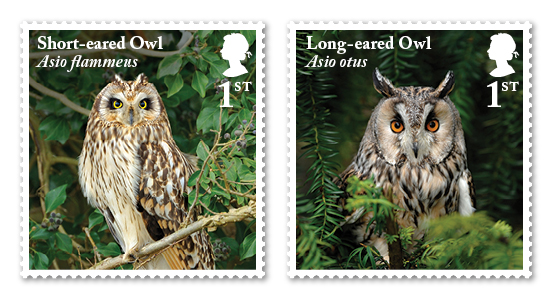
Few features differentiate the Short-eared and Long-eared Owls, with distinctions that may only be obvious to expert ornithologists. So this presented another design challenge; sourcing photographs that clearly showed contrasting characteristics — the short or long ear tufts, light or pale plumage, yellow or orange eyes, and deciduous or coniferous habitat. This is just the sort of attention to detail in which philatelists revel.
Designing this owl set was all about finding the right images to present the perfect clues for precise identification.
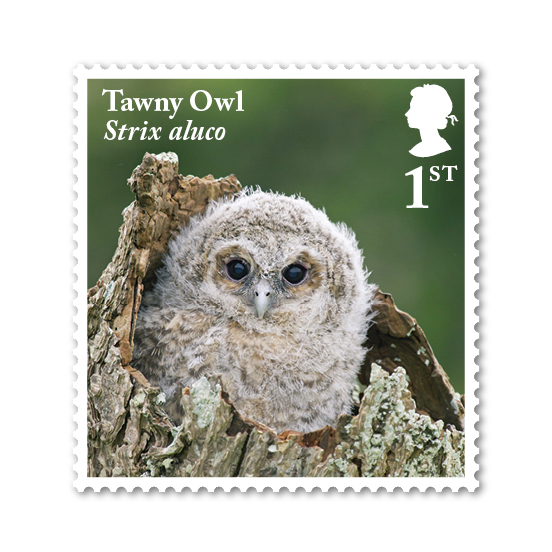
Alongside the owl set are our 'owlets'. How can anyone resist a tiny ball of fluffy feathers with such big, staring eyes?
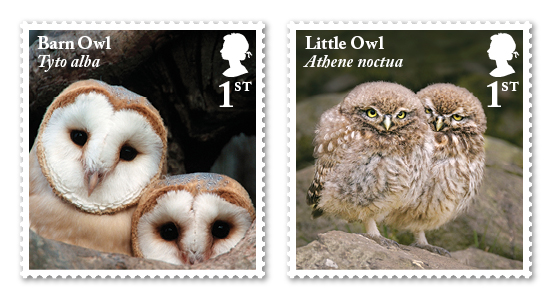
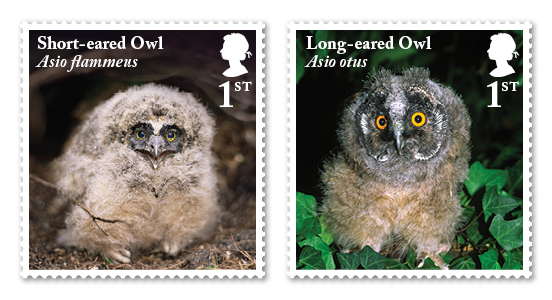
As anyone fortunate enough to have encountered an owl will tell you, these are special — even magical predators. Their acute hearing is much celebrated, but did you know that an owl's brain can process sound three times faster than any other bird's? Owl eyeballs are enormous, and take up to 70 per cent of the space in their skulls; ours take up only 5 per cent — which is why we cannot pinpoint a mouse at 20 paces. Their enlarged retinas allow for extraordinary focus, in poor light and even darkness. However, their forward-facing eyes, in spite of providing incredible depth perception, cannot move or 'roll' as ours can, which is why their necks are flexible enough to turn the head in a 270 degree sweep. Another of their hunting super-powers is soundless flight — a stealth technology attributed to special comb-like edges on the flight feathers; this breaks up the airflow so that beating wings cannot be heard.
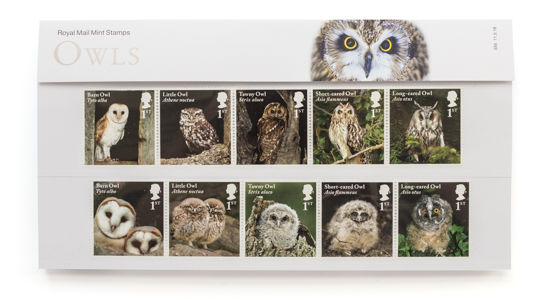
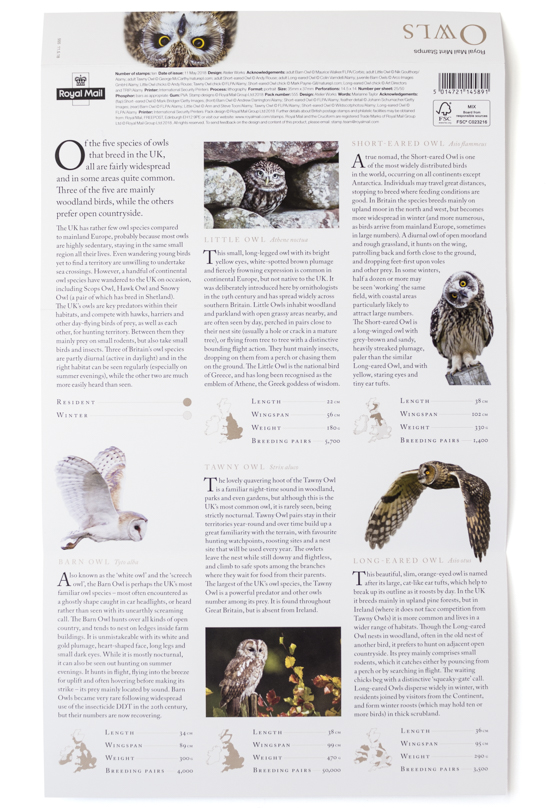
The curious, the enthusiast, and the collector alike can discover more startling owl characteristics in a comprehensive presentation pack that accompanies these stamp sets.
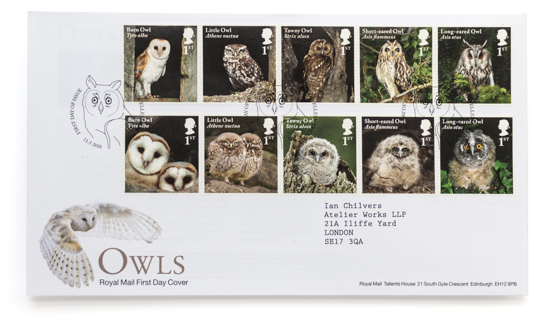
A brief summary of the distinguishing features, habitats and hunting methods of the various owls can be found on a stiffener card inside the first day cover.
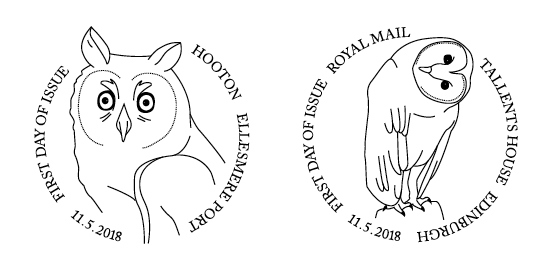
Stamp format/size: portrait 35mm x 37mm. Print process: lithography. Perforation: 14.5 × 14. Phosphor: bars. Gum: PVA. Number of stamps: 10
Related project: Animal Art
Related blog: Following Aesop